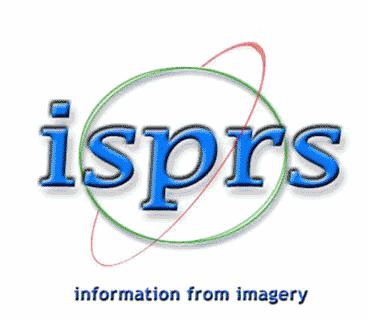Commission III - Photogrammetric Computer Vision and Image Analysis
Working Group III / 5 - Road Extraction and Traffic Monitoring, 2004 - 2008







International Society for Photogrammetry and Remote Sensing
Commission III - Photogrammetric Computer Vision and Image Analysis
Working Group III / 5 - Road Extraction and Traffic Monitoring, 2004 - 2008






The workshop took place in Vienna from Monday 29th August to Tuesday 30th August 2005. It was hosted by the Institute of Photogrammetry and Remote Sensing at Vienna University of Technology (I.P.F.). The date was chosen so that the workshop preceded the 27th annual meeting of the German Association for Pattern Recognition (DAGM) which was held in Vienna from Wednesday 31st August to Friday 2nd September, to emphasize the close connection between the disciplines of Photogrammetry and Computer Vision. The workshop had the scientific sponsorship of ISPRS and DAGM. It was organized by three ISPRS working groups: WG III / 4 'Automatic Image Interpretation for City-Modeling', WG III / 5 'Road Extraction and Traffic Monitoring', and WG IV / 8 'Spatial Data Integration for Emergency Services'. Staff from both the I.P.F. and the Institute of Photogrammetry and Cartography at TU Munich (I.P.C.) was involved in the organization. The workshop was chaired by Franz Rottensteiner (I.P.F.) and Uwe Stilla (I.P.C.). The organization committee consisted of the conference chairs, Stefan Hinz (I.P.C.), and Brian Donnelly (University of New South Wales, Sydney). Karl Kraus, the head of the I.P.F., welcomed the participants on behalf of the hosting institute.
It was the goal of this workshop to bring together researchers from both the Computer Vision and the Photogrammetric communities to present and discuss recent developments, the potential of various data sources, and future trends both with respect to sensors and processing techniques in automatic object extraction. Paper selection was based on a double-blind peer review of full papers. Altogether 40 papers were submitted to that workshop. Based on the results of the reviews, 30 papers from 10 countries were accepted for publication. Of the accepted papers, 18 were selected for oral presentation in six oral sessions. There was also an interactive poster session with 12 posters. The proceedings are available on paper and on CD-ROM as Vol. XXXVI – 3/W24 of the International Archives of the Photogrammetry, Remote Sensing, and Spatial Information Sciences. The workshop was wellattended with 65 registrants from 14 countries.
Of the 14 accepted papers related to WG III / 4, one dealt with the topic of single tree delineation from LIDAR data and one paper presented a theoretical framework for handling constraints in object modeling. All the other papers dealt with some aspects related to building extraction. The methods presented aimed at different levels of detail, ranging from the determination of building outlines from high-resolution satellite, LIDAR, InSAR, or image data via the extraction of roof planes from various data sources, to the reconstruction of façade details such as windows. With respect to LIDAR data, a trend to combine them with image data to achieve better segmentation results or to add texture to the resulting models could be observed. Digital aerial images were used for building detection. In this context, multiple overlaps were shown to give improved classification results. In building reconstruction, aerial images were either used in a semi-automatic environment or in combination with existing 2D GIS data such as cadastral maps. The potential of SAR data for building extraction was discussed, and one presentation showed how matching between building models and SAR data could be used for georeferencing.
The 15 papers related to WG III / 5 can be divided into two blocks of topics, namely ‘Road extraction’ (9) A glimpse into the auditorium at the beginning of the workshop. and ‘Vehicle detection’ or ‘Traffic monitoring’ (6). For road extraction, approaches were developed for a spectrum of different sensor data like aerial images, image sequences, satellite images, LIDAR data and RADAR data. The presented methods spread from scale-dependent adaptation of object models for road extraction over automatic and semiautomatic road extraction to road database update and automatic quality assessment of GIS road data. For road extraction from RADAR data one approach dealt with a fusion of results from multi aspect SAR data and another approach dealt with the exploitation of GMTI data (Ground Moving Target Indication). For vehicle detection two approaches were presented using thermal infrared video sequences, two approaches used high resolution satellite images, and two presentations were given using SAR data. In some of the approaches for traffic monitoring road data were used, which shows that both topics are inherently connected.
A special theme issue of the ISPRS Journal addressing the topic ‘Airborne and Spaceborne Traffic Monitoring’ is planed for late autumn 2006. The call can be found on: http://www.ipk.bv.tum.de/isprs/wgiii5 Several presentations dealt with the evaluation of algorithms or evaluation techniques themselves. To sum up, the full breadth of topics as indicated by the title of the workshop (‘Concepts, Algorithms, and Evaluation’) was covered by the presented papers.
Last changed: 2007-02-06
by Uwe Stilla